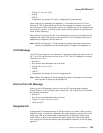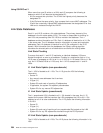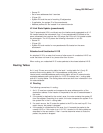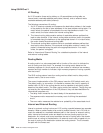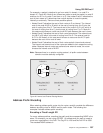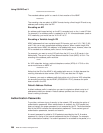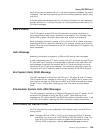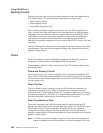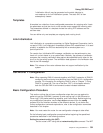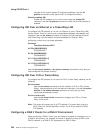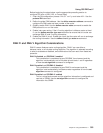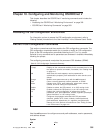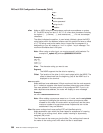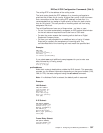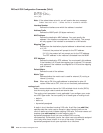
“initialization failure” may be generated on the static side due to
non-response to its link initialization queries. The static SVC is then
subsequently cleared.
Templates
A template is a collection of user configurable parameters for outgoing calls. It sets
the parameters so that the circuit on the remote router accepts the incoming calls.
The parameters defined in a template include the calling DTE address and the
call/user data.
You can define only one template per outgoing static routing circuit.
Link Initialization
Link initialization is a procedure proprietary to Digital Equipment Corporation (and is
not part of OSI). Link initialization immediately follows SVC establishment. It is used
primarily to establish the DECnet relationship with a remote system on a
point-to-point link.
On receipt of an Initialization/XID message, verification can be performed on two
levels: on a circuit basis or on a system basis. Basically, the process of verification
compares the incoming verification data against data specified locally either for the
circuit or for the calling system. The verification data appears in the verification data
field of the XID message.
Note: This release of the router software does not support verification by the
system.
OSI/DECnet V Configuration
Note: When operating DNA IV networks together with DNA V networks, all DNA IV
configuring and monitoring must be done from the DNA IV NCP> configuration
process. For information on configuring DNA IV, refer to “Chapter 7. Using
DNA IV” on page 249. The use of the term “OSI” in this chapter refers to
both the OSI and DNA V environments unless indicated otherwise.
Basic Configuration Procedure
This section outlines the minimum configuration steps that you are required to
perform to get the OSI/DNA V protocol up and running over a LAN (Ethernet or
Token-ring), X.25 packet switching networks, and Frame Relay. Before beginning
any configuration procedure, use the list device command from the config
process to list the interface numbers of the different devices. If you desire any
further configuration command explanations, refer to the configuration commands
described in this chapter.
Note: You must restart the router for new configuration changes to take effect.
Do the following basic configuration procedure before beginning the specialized
procedures described in the following sections.
Setting the network entity title (NET)
Set the router’s NET using the set network-entity-title command. The NET
Using OSI/DECnet V
Chapter 9. Using OSI/DECnet V 301



